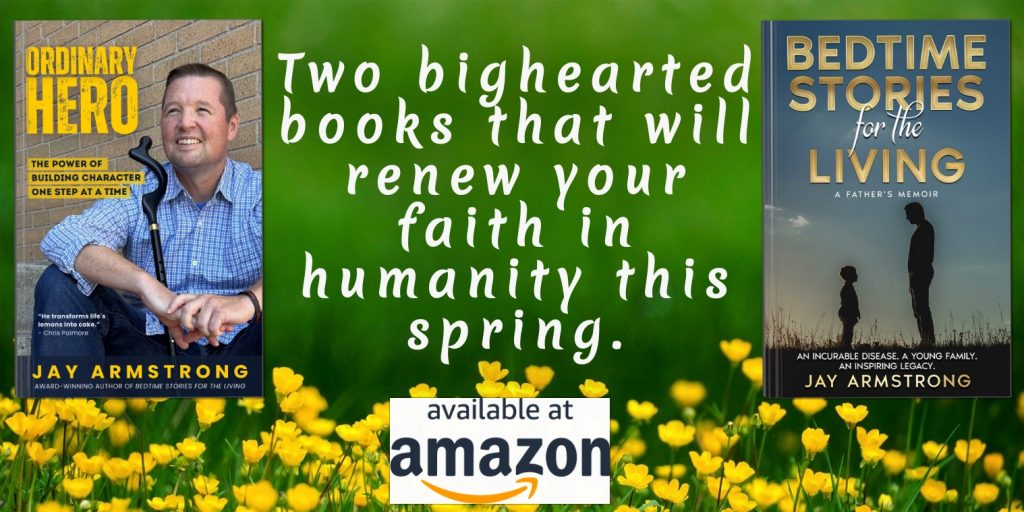Hope is Forever Trending
Cindy and I sat side by side on a pair of hard, blue chairs. The rain knocked so hard on the roof that I didn’t hear the knock on the room’s wood door.
The door opened and a young doctor in a white coat and wearing red-rimmed glasses stepped in, smiled, and said, “Jason…you’re back.”
My brow furrowed, “Do I know…’
“I’m Dr. Stevens. Do you remember? I treated you about this time last year for a broken hand.”
“Oh yeah. Now I remember. How are you?”
“I’m good. How’s the hand?”
I looked at my right hand and slowly made a weak fist, “Well, it’s no longer broken.”
She looked at my chart, “It says here you fell again…”

For the past few weeks I’ve written to you about hope. How hope is found in the present moment. How hope is our greatest resource. When I started writing to you in 2015, I had zero intention of writing about hope. My initial plan was to write some light, witty lists each week about trending topics in hopes my writing would trend worldwide, my lists would be read by millions of people, earn millions of dollars, be made into a movie starring Dwayne “The Rock” Johnson and I would be as recognizable as Taylor Swift.
But life got hard. And enduring the hard, I learned, is necessary for discovering the hope.
Writing about hope–stubborn hope–the kind Samuel Beckett, I imagine, hammered his Irish heart when he wrote, “You must go on. I can’t go on. I’ll go on” has become much more important than any list about any fleeting trend.
I wince as Dr. Stevens presses my bicep and I tell her it hurts to even wiggle my finger and she gives me a worried look and tells me elbow injuries can be tricky and that pain often radiates from shoulder to fingertips.
When I was younger, I thought hope was something “out there” and I hoped to one day walk into that magical land of hope. The gated community where, I assume, The Rock and T. Swift live. A place where it only rains when you’re inside and hope is as plentiful as palm trees.

But as Dr. Stevens examined my swollen right elbow, I realized that this is a moment when I need hope. And hope is not “out there.” It’s right here, in this ER room. It’s in Dr. Stevens care. It’s in Cindy’s concerned smile. “Hope,” Annie Lamott wrote in her book Notes on Hope,”springs from that which is right in front of us.”
As Cindy and I passed the front desk, a young woman wearing black scrubs behind a computer spoke, “Alright no cast!”
“No break. Thank God. Just a pretty bad sprain,” I said.
She smiled and pointed with her chin to the automatic door, “ No break and the rain just stopped for you guys. Today is going to be a good day.”
Life is now way more unpredictable and even more painful than I am comfortable with. And my plan for writing witty listicles about pop culture was submarined by a brain MRI that showed an incurable brain disease. So to keep up my good spirits and maintenance my hope, I now write letters to you knowing you may need a word about hope today. Knowing hope is needed– by all of us–to survive.
How hope is essential medicine for mending, recovering, and healing. Three actions elemental to living.
And because of that– hope will forever be trending.
Be well,
Jay

Donation Link
~~
One Line, One Love Episode 21: Writer’s Toolbox– Setting as a Gateway
Establishing a setting is vital for any writing piece. The good news is gathering details for the setting is both easy and fun. All you have to do is pay attention and let your imagination run wild. In this episode, Gail and Jay have a lively conversation about how writers can use a sensory imagery chart to establish setting, further engage in the writing process, and ultimately make their writing more enjoyable for the reader. G and J also provide a helpful chart to gather important sensory details. If you’re an everyday writer who wants to learn how better collect sensory details and how to add those details to your writing then this 20 minute episode is a must listen!

OLOL is a unique listening and reading experience that will inspire everyday writers, who dream of writing, to pick up their pens and write one line at a time.
This podblog format (a hybrid of a podcast and blog) is for everyday writers who–like me–often need a creative boost, a scrap of encouragement, and practical advice to unleash the writer within. Each episode consists of five wide-ranging, writer-focused questions and a weekly writing prompt.
Please check it out! And please share with any writer friends or anyone in your life who has ever considered picking up the pen.
~~

Purchase Link
~~
Warm greetings to everyone who found me on the University of Pennsylvania’s Ataxia Clinic’s website! Thanks for stopping by. I have ataxia and though I’m not a doctor, I hope my words comfort, encourage, empower, and serve as good company on your journey.

~~
Jay Armstrong is a speaker and an award-winning author. Despite being diagnosed with a rare neurological disease, that impairs his movement, balance, eyesight, and speech–Jay presses on. The leader of the Philadelphia Ataxia Support Group, he hopes to help you find joy, peace, and meaning in life.





